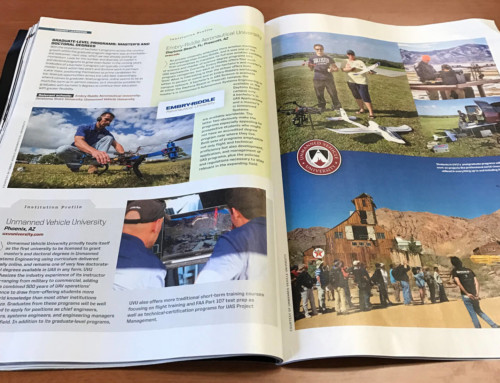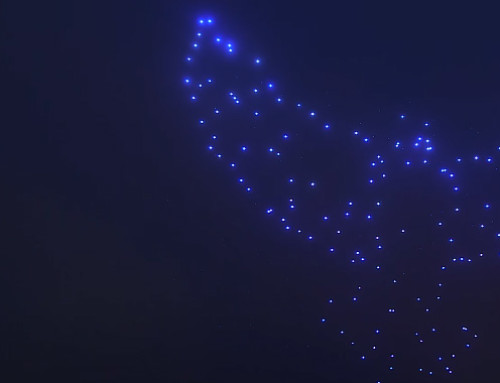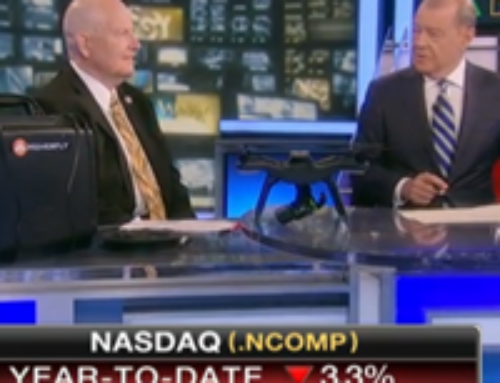Professional photographer and videographer Joe Polillio sought formal education at Unmanned Vehicle University to enhance his skillset and set himself apart from the competition.
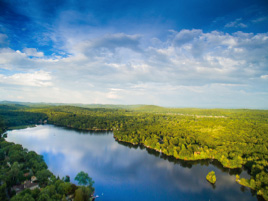
His frustration began during the production of a music video. “We were standing on the beach, and I wanted to capture a 360-degree aerial shot of the location’s expansiveness, with the artist, the sand and the ocean,” he said. “But I knew that kind of shot was too expensive for the project’s budget. How could I have achieved this without renting some sort of aerial vehicle? It was impossible.”
That’s around the time that a Twitter post broadcasting a New York City drone seminar, hosted by Unmanned Vehicle University, caught Polillio’s eye. “Throughout my career, there have been certain camera angles that I wanted to pursue, but could not with the technology available to me,” Polillio said. “I knew it was time to delve into the new wave of opportunities that drones are offering photographers.”
Until the advent of drones in photography and videography applications, planes and helicopters were the primary method used to capture aerial imagery. Unfortunately, plane and helicopter rentals require hefty budgets. Drones, on the other hand, are affordable, easy-to-use, and deliver higher quality shots. “Even with a bigger budget, capturing images from a plane is still very restrictive,” he said. “Planes can only shoot from high angles. Drones allow photographers to shoot from high and low angles with much more control over the situation.”
On the ground, drones also have the potential to replace common tools used for filmmaking. To create smooth motion shots, professionals use a camera dolly, a specialized piece of filmmaking equipment that moves on a track with a camera and a camera assistant. Drones have the ability to replace dollies, says Polillio, and offer filmmakers the opportunity to shoot in motion from slightly above ground at varying elevations. “Drones are not just for aerial photography,” Polillio emphasized. “They’re going to change the game completely, in the sky and on the ground.”
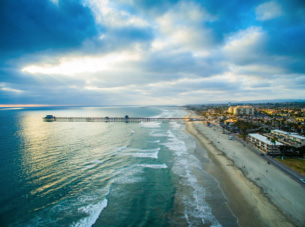 In a digital world where everyone with a smartphone has a decent quality camera, Polillio knew he needed to further develop his skillset as a photographer to distinguish himself from the rest. Formal drone training, he says, distinguishes him by giving him a “leg up” when clients are seeking a professional for a particular project. “I’m competing with anyone, photographer or not, for commercial jobs,” Polillio added. “By equipping myself with knowledge on how to safely operate a drone, I am able to offer my clients a service that results in unique, breath-taking images.”
In a digital world where everyone with a smartphone has a decent quality camera, Polillio knew he needed to further develop his skillset as a photographer to distinguish himself from the rest. Formal drone training, he says, distinguishes him by giving him a “leg up” when clients are seeking a professional for a particular project. “I’m competing with anyone, photographer or not, for commercial jobs,” Polillio added. “By equipping myself with knowledge on how to safely operate a drone, I am able to offer my clients a service that results in unique, breath-taking images.”
After attending Unmanned Vehicle University’s seminar in New York City, Pollilio was surprised to find out how significant of an impact drones would have on his industry. The applications for drones in his current career seemed endless. That’s when he decided to pursue a graduate degree at the University in UAV Basic Flight Training.
“I feel the same way about drones that I do when digital photography first entered the market twelve years ago,” he explained. “Drones introduce a whole range of possibilities that the industry hasn’t even begun to tap into.”
Polillio has just recently applied for his FAA333 exemption, and is pursuing a pilot’s license, which will allow him to fly drones commercially. He is looking forward to using them for profit in his professional endeavors. “My education will expand my business and further develop what I can offer my clients,” he said. “It opens up my work to even more architecture and design jobs, commercial and editorial jobs, and TV industry jobs- something I’ve never really been involved in up until now.”
To see Joe Polillio’s still and motion photography, click here.


